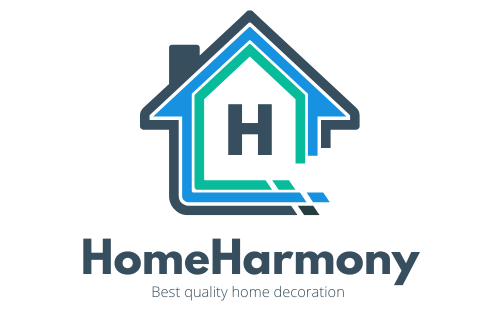Prioritize Multi-Functional Furniture That Works Double Duty

Here’s the thing about small home offices – every single piece of furniture needs to earn its keep. 77% of experts say that having a multifunctional space is the biggest home office trend in 2024, and designers recommend “the flexibility of a home office that can also be a guest room” when space is limited. Think beyond traditional desks and consider pieces that serve multiple purposes.
A storage ottoman can function as extra seating for video calls while hiding office supplies inside. Multi-functional furniture on hidden casters will play an ever-increasing role in home office design, especially in smaller homes or apartments, making it easier to reconfigure your space as needed. Wall-mounted fold-down desks are lifesavers in tiny spaces – they disappear when not in use but provide a full workspace when you need it.
Master Vertical Space Like a Pro

Your walls are prime real estate that most people completely ignore. The first trend to watch out for is the ingenious use of vertical space, utilizing the space above your desk creates a perfect balance between decor and function, enhancing aesthetics but also offering practical storage solutions, especially for compact home offices. Floor-to-ceiling shelving units can house everything from books to office supplies while taking up minimal floor space.
Floating shelves above your workspace create instant storage without the bulk of traditional cabinets. Storage should be top priority in all home office designs, with so many papers, books and supplies to store, be sure to accommodate it all with shelves, drawers and cabinets. Consider magnetic boards or pegboards on walls – they’re incredibly versatile for organizing everything from pens to charging cables, and they add visual interest to your space.
Choose Ergonomic Solutions That Don’t Compromise on Space

Just because your office is small doesn’t mean you should sacrifice your body’s health. 54 percent of top interior design and home staging experts chose ergonomic furniture as a priority in dedicated home offices, and the numbers back up why this matters. A survey found that ergonomics prevents physical discomfort for 95% of workers, users of height-adjustable desks saw a 17% decrease in sitting time within three months, and incorporating an ergonomic chair into the workspace can enhance productivity by 15% to 20%.
The global ergonomic chair market size was valued at USD 10.4 billion in 2024 and is projected to grow from USD 11.13 billion in 2025 to reach USD 19.12 billion by 2033, driven partly by the home office boom. Look for compact ergonomic chairs with good lumbar support that don’t take up excessive floor space. Sit-stand desks and configurable furniture will thus become the norm, and many come in space-saving designs perfect for smaller areas.
Maximize Natural Light and Create Smart Artificial Lighting

46% of pros opt for light as a main feature for homeowners, whether natural or cleverly-used artificial, lighting can optimize a working environment. In small spaces, proper lighting becomes even more critical because it can make your office feel larger and more open. Position your desk near a window whenever possible – not only does natural light boost mood and energy, but it also reduces your reliance on overhead lighting during the day.
No one wants to work in a space with no natural light, where the only way to tell the passage of time is via the ticks of a clock, and science has proven that natural light in the workplace makes an employee feel better rested and more positive. For artificial lighting, skip the harsh overhead bulbs and opt for layered lighting instead. A good desk lamp provides focused task lighting, while ambient lighting from floor lamps or wall sconces creates a warm, welcoming atmosphere that doesn’t scream “cramped office.”
Incorporate Biophilic Design Elements for Mental Clarity

One of the most exciting home office trends for 2025 is the continual rise of biophilic design, incorporating natural elements—like plants, sunlight, and organic materials—into your workspace design. The science behind this is pretty amazing – employees whose offices included natural elements scored 15% higher in creativity than those without. Even in the tiniest office, you can sneak in some greenery.
Small potted plants on floating shelves, a single snake plant in the corner, or even a small herb garden on a windowsill can transform the feel of your space. The trend for biophilic design – incorporating natural elements like greenery and florals – is set to continue, and wood trim is a major trend in home office design, bringing a warm, earthy feel to the workspace, adding a touch of nature and fostering a calming environment. Wood accents, natural textures in your decor, or even a small water feature can bring that outdoor feeling inside without taking up precious workspace.

Henrieke Otte is an accomplished writer and content editor, specializing in topics that inspire thoughtful living—ranging from global travel and sustainable lifestyles to interior design and architecture. With a keen editorial sense and a background in cultural studies, Henrieke brings depth, elegance, and clarity to every piece she crafts.
Her work is known for its engaging voice, visual sensitivity, and ability to turn complex ideas into accessible, reader-friendly narratives. Whether exploring eco-conscious destinations, dissecting climate-conscious home trends, or curating serene living spaces, Henrieke writes with a balance of creativity and insight that resonates with design-savvy, environmentally aware audiences.
Driven by a love of meaningful storytelling and a refined aesthetic, Henrieke contributes regularly to digital platforms and magazines where quality content meets visual sophistication.

